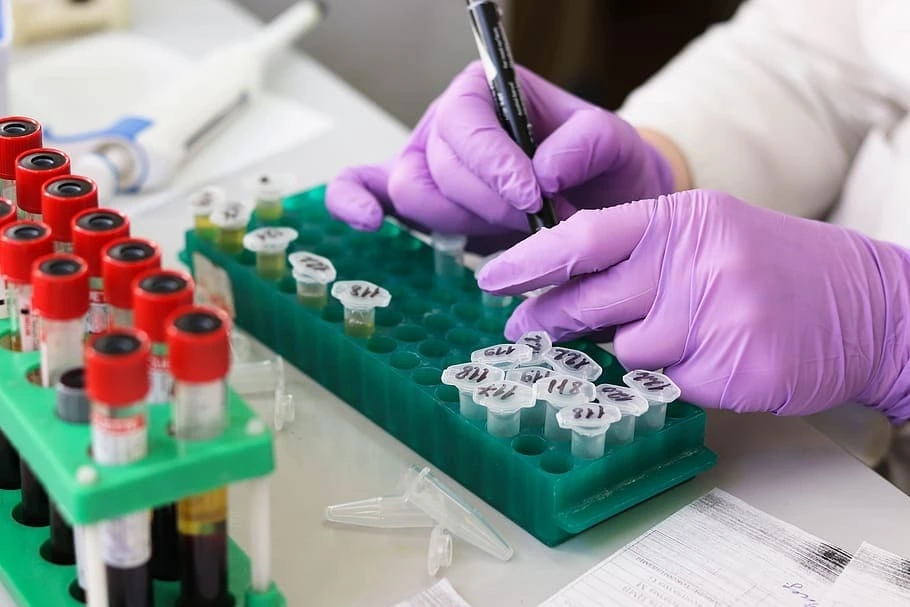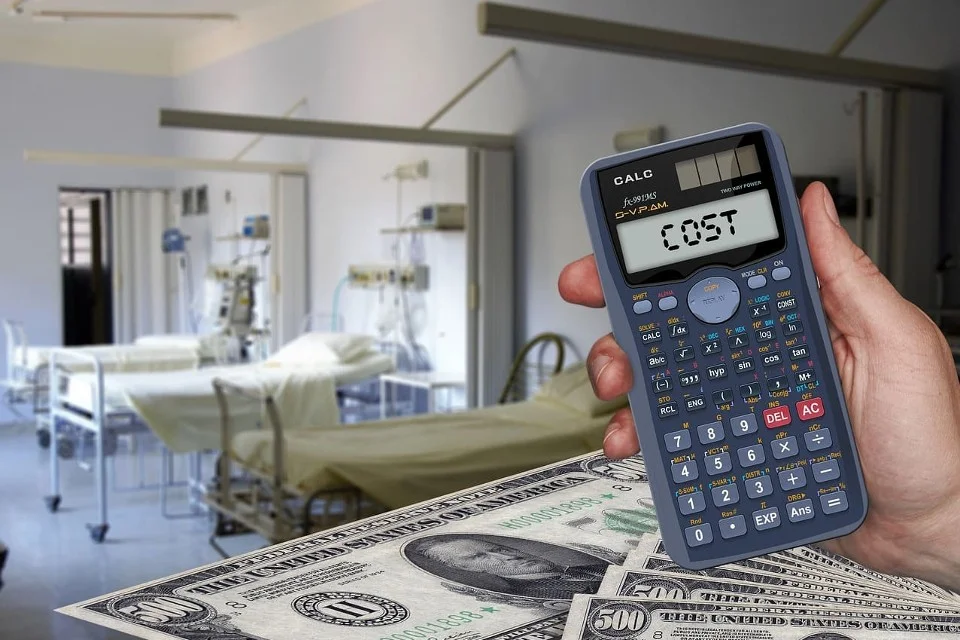How to Use Alcohol Percentage in Blood Calculator
FEATURES
Measure Responsibly: A Guide to Alcohol Percentage in Blood Calculator
Alcohol intake should be done responsibly in today's society to protect oneself and others. Knowing the Blood Alcohol Content (BAC), which is a common way to assess the percentage of alcohol in the blood, is essential to cautious drinking. This essay will examine the importance of blood alcohol content (BAC), the variables that affect it, and the function of alcohol percentage in blood calculators.
Introduction
A key indicator of the amount of alcohol in a person's bloodstream, blood alcohol content (BAC) is reported as a percentage. This numerical depiction is essential for determining an individual's degree of intoxication and has many uses in social, medical, and legal domains. Knowing one's blood alcohol content (BAC) is critical for safe alcohol use and is also important for deciding if certain activities are permitted, especially when it comes to driving while intoxicated (DUI).
The bodily changes brought about by alcohol consumption are the basis for the idea of BAC. When someone consumes alcohol, the walls of their stomach and small intestine allow the alcohol to enter their circulation. The kind and strength of the beverage, the person's weight, metabolism, and the existence of food in the stomach are some of the variables that affect the pace of absorption.
Alcohol travels throughout the body's tissues and organs as it enters the bloodstream. As the main organ involved in alcohol metabolism, the liver breaks down and gets rid of alcohol in the body. The ratio of absorption to elimination establishes the blood alcohol content (BAC), which is the final measurement.
The blood alcohol content (BAC) is commonly stated as a percentage, and in many places, the legal limit is 0.08%. This indicates that 0.08% of blood in 1000 milliliters is made up of pure alcohol. People should be aware of this percentage because going over the legal limit can have serious legal repercussions, such as fines, license suspension, or even jail time.
BAC is more significant than only legal implications. It is essential to detecting impairment and learning how alcohol affects the body. BAC levels are correlated with visible indicators of alcohol intoxication, like slurred speech, poor judgment, and impaired motor skills. Law enforcement officers, medical experts, and individuals all find great value in this information.
In legal settings, breathalyzer tests or blood tests are frequently used to determine blood alcohol content (BAC). While blood tests assess the amount of alcohol in the blood directly, breathalyzers estimate blood alcohol content (BAC) by evaluating the amount of alcohol in a person's breath. These techniques yield precise and trustworthy readings that can be used as proof in court instances involving DUIs and other legal matters.
Considering the possible repercussions of driving while intoxicated, the importance of BAC becomes even more clear. Because alcohol affects coordination, reaction times, and cognitive abilities, driving a car with a high blood alcohol content dramatically increases the likelihood of an accident. It is essential to comprehend BAC levels and how they affect one's ability to drive in order to promote road safety and reduce the number of alcohol-related collisions.
Beyond legal issues, BAC plays a crucial role in appropriate drinking habits. People can estimate the amount of alcohol in their blood based on a variety of parameters, including weight, gender, and the type and quantity of alcohol they have drunk, by using BAC calculators, which can be found online or through mobile apps. With the use of these resources, people are better equipped to decide how much alcohol to drink and can avoid overindulging.
Furthermore, knowing BAC helps people understand how alcohol affects them individually and their own tolerance levels. Body mass, metabolism, and genetic predispositions are a few examples of factors that can affect how fast or slowly alcohol is processed, which can change how rapidly and slowly blood alcohol content increases and falls.
Blood alcohol content is a crucial idea with broad applications in the fields of medicine, law, and human behavior. It provides useful data for determining degrees of intoxication and making educated judgments regarding alcohol use since it acts as a quantitative indicator of the amount of alcohol in the blood. The understanding of blood alcohol content (BAC) is essential to encouraging a safer and more educated approach to alcohol use in society, whether it is utilized by law enforcement to enforce DUI laws, by medical professionals to understand the physiological impact of alcohol, or by individuals aiming for responsible drinking.
What is Blood Alcohol Content (BAC)?
The amount of alcohol in a person's bloodstream is measured by their blood alcohol content, or BAC. Usually, a percentage is used to express it. Law enforcement frequently uses blood alcohol content (BAC) as a standard technique to detect whether an individual is operating a vehicle while under the influence of alcohol. It is a crucial statistic for determining an individual's level of intoxication.
Physiology of Alcohol Absorption and Metabolism
Alcohol's trip through the human body starts the moment it is consumed. Alcohol enters the bloodstream through the stomach and small intestine and is quickly absorbed after consumption. The kind and strength of the beverage, the person's body weight, metabolism, and the existence of food in the stomach are some of the variables that affect the pace of absorption.
Alcohol affects several organs and tissues throughout the body once it enters the bloodstream. As the main organ involved in alcohol metabolism, the liver is essential in the breakdown and excretion of alcohol from the body. The measureable quantity known as Blood Alcohol Content (BAC) is the result of the careful balance between the processes of absorption and excretion.
Understanding Blood Alcohol Content
Definition and Analysis:
The defined phrase, expressed as a percentage, is the blood alcohol content (BAC), or the ratio of alcohol to total blood volume. A measurable indicator of intoxication, 0.08% serves as the standard legal limit for driving in many jurisdictions. Finding out a person's level of impairment and understanding how alcohol impacts cognitive and motor functions require measuring blood alcohol concentration (BAC).
Legal Impacts:
Exceeding the legal blood alcohol content limits can result in severe consequences such as fines, license suspension, and perhaps jail time. When investigating DUI cases, law enforcement usually determines the blood alcohol concentration (BAC) based on the results of breathalyzer or blood tests. The BAC legal framework places a strong emphasis on the gravity of driving under the influence and the commitment to upholding public safety.
Factors Affecting Blood Alcohol Content:
Investigating the myriad of variables that affect alcohol absorption and metabolism is necessary to comprehend the variation in BAC levels.
Body Weight and Composition:
The determination of BAC is significantly influenced by body weight and composition. Higher body fat percentages may cause a slower metabolism of alcohol, which raises blood alcohol content (BAC) in comparison to lower body fat percentages.
Variations by Gender:
Variations in BAC are also influenced by differences in gender. Due to differences in body composition and hormonal factors, women often have a greater blood alcohol content (BAC) than men of the same weight and alcohol consumption.
Consumption Rate
The rate at which a person drinks alcohol affects their blood alcohol content (BAC). Fast ingestion causes the body to struggle to digest the alcohol, which causes the blood alcohol content to rise more quickly.
Consumption of Food:
Eating during intoxication can slow down the rate at which alcohol is absorbed since food slows down the process. This component is essential to practicing careful drinking.
Hereditary Elements:
Individual variations in BAC can also be attributed to genetic predispositions. Individual differences exist in the enzymes that are in charge of alcohol metabolism, which affects how quickly the body breaks down alcohol.
Penalties and Legal BAC Limits:
While different jurisdictions have different legal limits for blood alcohol content (BAC), 0.08% is generally considered a common threshold for driving. The serious repercussions that can arise from beyond these limits highlight how important it is to practice responsible drinking and be aware of one's blood alcohol content.
The Effect of BAC on Safety and Health:
It's critical to comprehend the effects of BAC on health in addition to legal implications. Regularly high blood alcohol content and long-term alcohol use can be harmful to one's physical and mental health. It is important to remember the health hazards linked to high blood alcohol content and to consume alcohol in moderation.
Value of BAC Calculators:
BAC calculators are useful resources that assist people in estimating their blood alcohol content (BAC) depending on a range of inputs. These online calculators account for variables such as weight, gender, quantity consumed, and length of use. People can use a BAC calculator to determine their level of impairment and make educated decisions about how much alcohol they consume.
BAC Calculator Usage
The technique of using a BAC calculator is simple. Usually, users enter information about their weight, gender, kind and amount of alcohol ingested, and how long they drank it for. After that, the calculator returns an approximate BAC level. It's crucial to remember that BAC calculators are only meant to be used as estimations; they should never be utilized for exact results.
BAC Levels' Legal Consequences:
The legal limits for blood alcohol content (BAC) differ throughout jurisdictions and are frequently utilized to assess whether or not someone is driving while intoxicated (DUI). It's essential to comprehend these boundaries in order to drink responsibly and stay out of trouble with the law.
Conclusion:
TIn conclusion, one of the most important aspects of responsible drinking is knowing your blood alcohol content, or BAC. By enabling people to make knowledgeable judgments regarding their alcohol intake, BAC calculators can improve everyone's safety in the community. People can take proactive measures toward appropriate and moderate alcohol intake by being aware of the variables determining BAC and the importance of these computations.
TOOLS
Alcohol Percentage In Blood Calculator
FAQ
Gender constant x body weight in grams equals the division of the amount of alcohol eaten in grams. This phase will provide you with an unprocessed body alcohol content measurement. Divide the unprocessed value by 100. Your BAC can be calculated as a percentage by multiplying the raw figure from the previous step by 100.
0.2–0.3% (200–300 mg/dL):- Nausea, vomiting, incontinence
0.3–0.4% (300–400 mg/dL):- Needs assistance walking, loss of consciousness
0.4–0.5% (400–500 mg/dL):- Possible coma or respiratory failure
Above 0.5% (500 mg/dL):-Possible death
BAC 0.10%: You might experience slower thinking, slurred speech, and a slower reaction time at this level. BAC 0.15%: At this level, you can feel depressed, throw up, lose your equilibrium, and have trouble controlling your muscles.
Step 1: Determine the volume of alcohol in the drink
Step 2: Determine the total volume of the drink.
Step 3: Divide the volume of alcohol by the total volume of the drink.
Step 4: Multiply the result by 100 to get the ABV percentage.
Use a personal breathalyzer at home and follow the manufacturer's instructions to get an estimated blood alcohol content (BAC). As an alternative, be aware of indicators of alcohol intoxication such slurred speech and lack of coordination.
Blood Alcohol Content (BAC): A individual with a blood alcohol content of 0.05%, for instance, has 50 milligrams of alcohol per 100 milliliters of blood. A person's BAC is influenced by their body weight and type, amount and speed of alcohol consumption, and amount and kind of food consumed.
This is a very high blood alcohol content, between 0.30 and 0.39%. Your chance of unconsciousness and heart rate rise along with your probability for death. You can have trouble controlling your bladder and have irregular breathing.
Currently, a BAC of 50 mg is the limit for drunk driving. This translates to 50 mg of alcohol for every 100 mL of blood. The legal limit for experienced, inexperienced, and trainee drivers is 20 milligrams. After one normal drink, the majority of persons will have a BAC of 20 to 50 mg.
Reviews
Ratings Summary:
Average Rating: 4.8
Rating Count: 12456
Existing Reviews
John Doe
Rating: 4
Great product, highly recommended!
Jane Smith
Rating: 5
Amazing service, will definitely come back.
ABV Tester
Thank you for using our services
If you could share our website with your friends, that would be a great help









